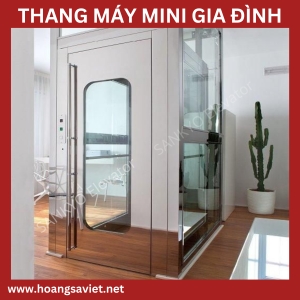The system is processing. Please wait a moment!
- Home experience homelift & elevator technical Sharing experiences
Elevator Magnetic Card: Structure, Classification, Security Control Application for Buildings
TABLE OF CONTENTS
- Structure of elevator magnetic card
- Operating principle of the elevator magnetic card system
- Common types of elevator magnetic cards
- Distinguish between 2 building security management systems using elevator magnetic cards
- The role of the elevator access card system in building security control
- Is it necessary to use an elevator card for a home elevator?
- How to copy the card from the elevator to create a backup copy
- Notes when using elevator cards
In multi-storey buildings, movement is mainly done through the use of elevators. This creates the opportunity to control the security of the entire building by managing elevator users. In Vietnam, to ensure security for passenger elevators, many buildings apply control systems such as fingerprints , magnetic cards or codes .
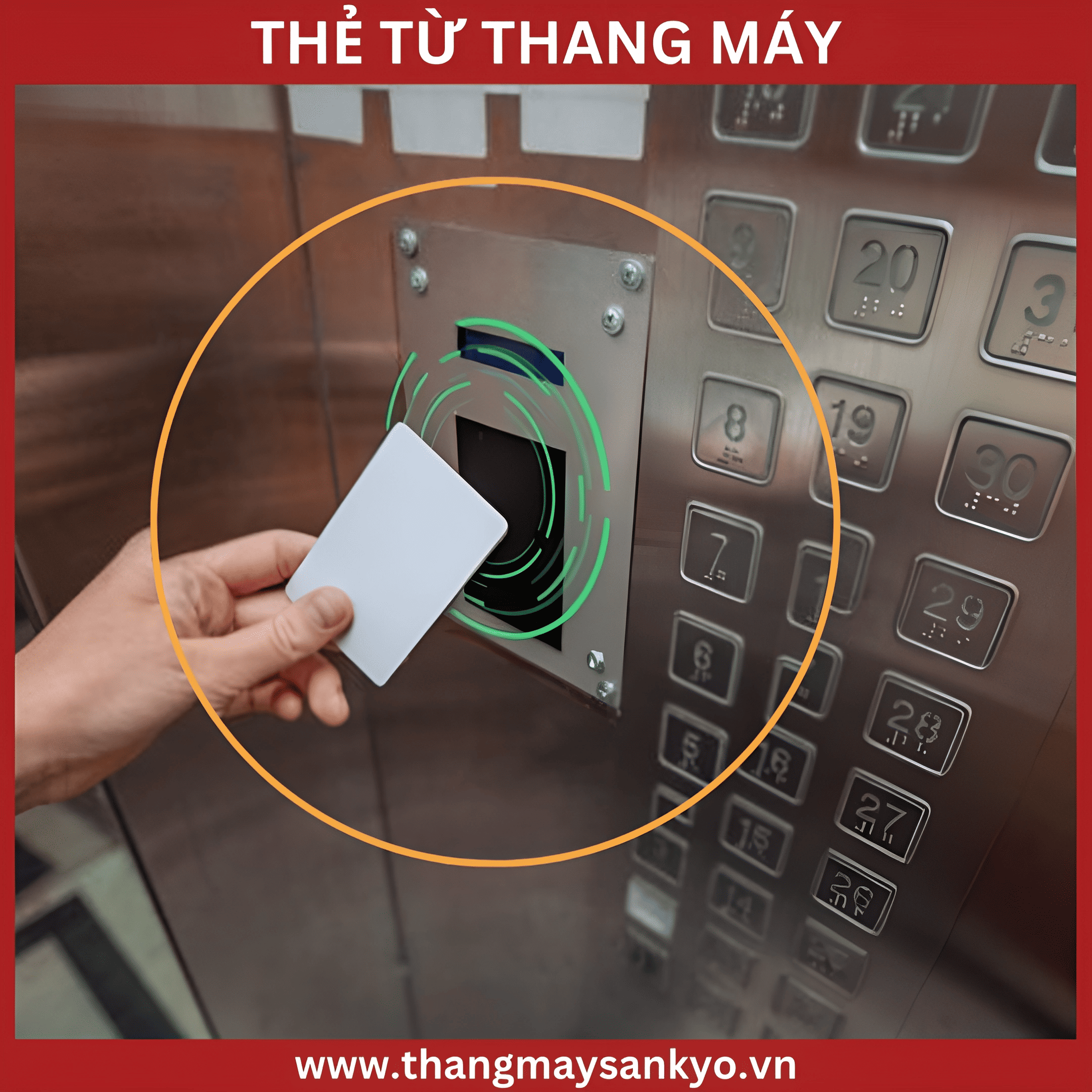
Among them, the elevator card security control system is the most popular and popular. This brings efficiency and convenience in managing access rights and protecting the safety of residents and building users.
SEE MORE OTHER PRODUCTS:
CONSTRUCTION OF CARD FROM ELEVATOR
Elevator access cards are often issued to residents or employees working in the building. This prevents unfamiliar people from arbitrarily entering the building through the elevator system.
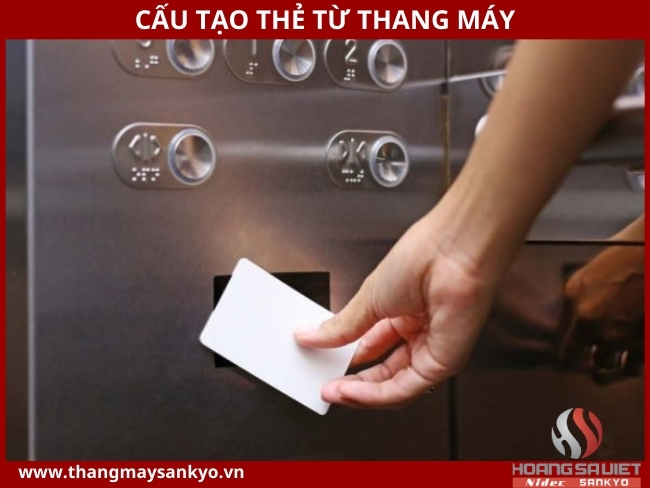
The elevator card contains a small electronic chip used to identify and store personal information of elevator users. This helps the security system verify and authorize elevator use through a reading device. At the elevator door or inside the cabin, the elevator card reader uses touch technology to communicate and confirm the validity of the information on the card.
The structure of the elevator card includes 3 main layers as follows:
- Innermost layer: Contains electronic chips and radio antennas. Each magnetic card is programmed with unique information for a user. This ensures that each tag is unique and does not overlap with any other tag.
- First cover layer: Designed to protect and maintain the position of the innermost layer.
- Outer shell: Usually made from hard plastic, covering both the front and back of the card, providing comprehensive protection.
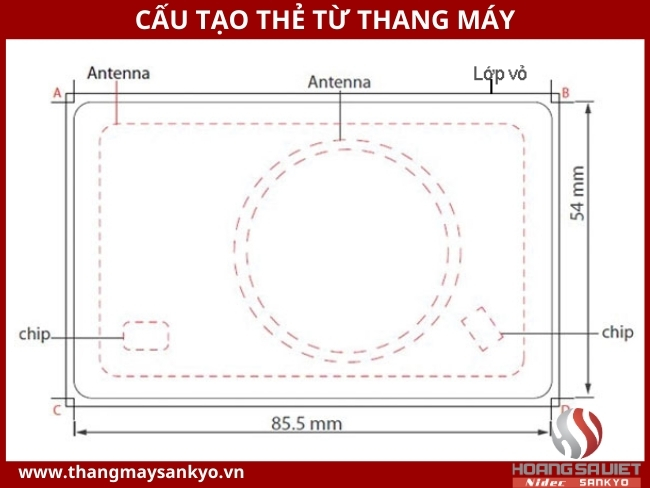
PRINCIPLES OF OPERATION OF THE ELEVATOR CARD SYSTEM
The operating principle of elevator magnetic cards is based on wireless technology to perform communication and determine the validity of magnetic cards. Each magnetic card allocated to a user will have a unique identification code. Inside the elevator cabin, there is a card reader installed. Users only need to swipe the card on the reader to confirm and then can use the control buttons on the elevator control panel. The steps of this process are as follows:
** Interactive step: ** When the user brings the magnetic card near the reader, the antenna on the magnetic card receives signals from the reader to retransmit the card's identification information to the reader.
** Authentication step: ** The magnetic card reader checks the identification information from the card and compares it with the system's database. If the identification information is valid, the elevator will open the door or accept access.
** Response step: ** If the magnetic card is accepted, the magnetic card reader returns the results to the access control system. The system will perform actions such as opening elevator doors, recording access times, and controlling access to defined floors.
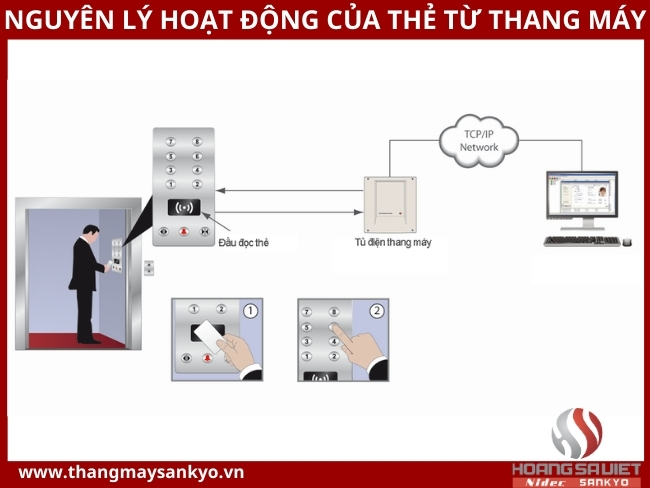
COMMON TYPES OF ELEVATOR CARDS
In today's market, there are many types of elevator magnetic cards , but there are three main types that are commonly used, including RFID low-frequency induction cards, NFC high-frequency induction cards, and multi-touch cards. use keychains.
Low frequency elevator magnetic card
Contactless elevator cards , also known as low-frequency magnetic cards, operate via radio waves at a frequency of 125KHz. This type of card is very popular on the market today thanks to its low cost and high reliability. Data is usually stored on the card with about 4-14 digits.
The advantage of this type of elevator card is that it saves time because there is no need to swipe the card. However, the downside is that it can only be installed for a single application.
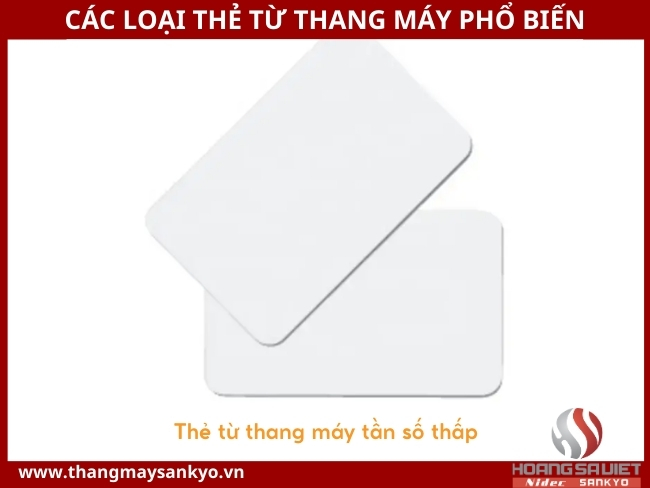
High frequency elevator magnetic card
This is a contactless smart elevator magnetic card , uses high frequency, has high security and uses IC for the ability to read and write up to 100,000 times. This card communicates with the reader via NFC communication technology at 13.56MHz frequency (Mifare card type) with a distance of less than 10cm. The outstanding advantage of this type of card is the ability to integrate both elevators and other devices such as doors or electrical systems. The card's data storage period can be up to 10 years.
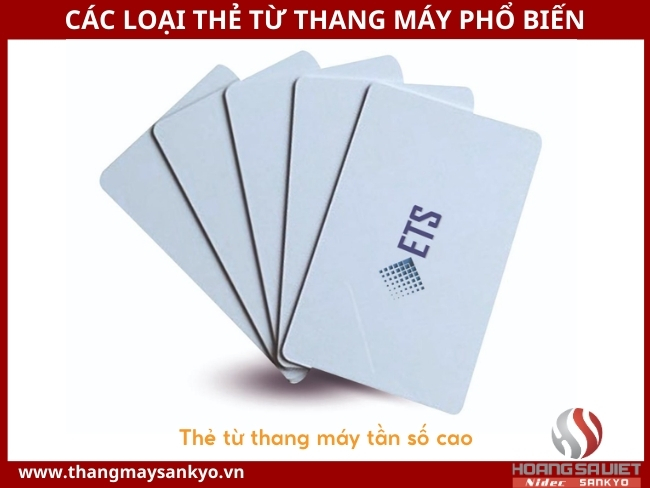
Keyfob multi-purpose elevator card
As a multi-application card capable of switching between RFID or NFC communication technology, this card is integrated for use in many different applications. With the use of ABS material, this card is not as easy to break as other conventional cards. Besides, the compact and beautiful design of the card allows it to be easily hung on the car key chain, helping users not forget to bring the card when using the elevator.
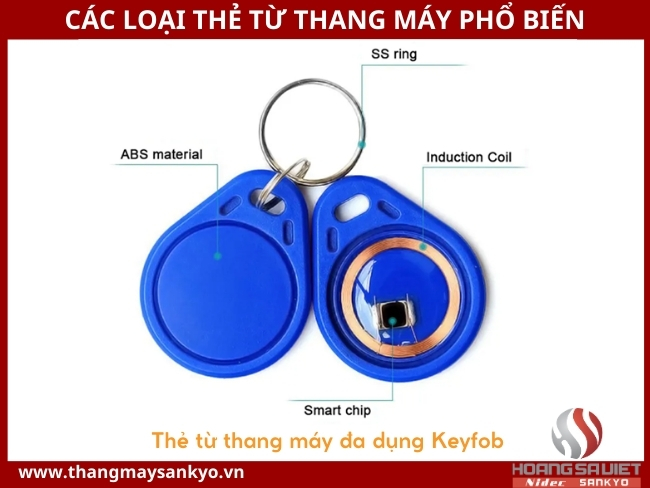
DISTINGUISHING 2 BUILDING SECURITY MANAGEMENT SYSTEMS USING ELEVATOR CARD
|
Criteria |
Magnetic Card Security Control System for levelless elevators |
Magnetic Card Security Control System for tiered elevators |
|
Characteristic |
- Do not divide users into specific tiers or groups. |
- Divide users into specific floors or groups. |
|
Manage |
- All users using magnetic cards have access to the entire building. |
- Users are stratified, each stratum can have its own access rights. |
|
flexible |
- Lack of flexibility in managing and controlling access rights. |
- Provides greater flexibility in managing and controlling access rights. |
|
Security |
- For users, there is no clear distinction between tiers. |
- Provides a higher level of security with user stratification. |
|
Advantage |
- Simple, easy to deploy. |
- Provides detailed and flexible security controls. |
|
Limit |
- Lack of flexibility and detail in security management. |
- Requires management to face more complex management. |
Note: Criteria and assessments may vary depending on the specific requirements of each building and security management system.
SEE MORE OTHER PRODUCTS:
THE ROLE OF THE ELEVATOR ENTRY CARD SYSTEM IN BUILDING SECURITY CONTROL
Separating passengers to the elevator
For example, in hospitals, so that doctors can travel faster and more conveniently take care of patients, they are often arranged to take a separate elevator system using magnetic cards. The remaining patients and family members take another elevator.
Ensure security for reserved areas
A mixed-use building for residential and business purposes, elevator cards are issued specifically to residents to take the elevator to the apartment complex above. Customers coming for transactions can only take the elevator to the business floors below.
Supports elevator management and user traffic monitoring, while increasing the lifespan of the equipment
Through decentralization of people who are allowed to use passenger elevators on different floors. From there, the card bearer's travel history can be retrieved, helping to determine responsibility related to an event in a certain area.
Optimize elevator management, monitor user flow, and increase equipment longevity
Through decentralization of people who are allowed to use passenger elevators on different floors. From there, the card bearer's travel history can be retrieved, helping to determine responsibility related to an event in a certain area.
Control the use of elevators for the right purpose, ensuring the safety of equipment in the building
For example, the card issued to elevator technicians can go to the top floor where the machine room is located to perform maintenance or repair on the elevator.
Limit the contact of individuals who are not allowed to enter or leave the building, thereby limiting illegal break-ins and theft to ensure the security of the building.
Prevent unauthorized people from entering the building, reducing the risk of unauthorized entry and theft to protect security.
Reduce building operating costs through an elevator card access system, providing automatic control for access to floors without the need for physical guards, saving costs for the building management system home.
IS IT NECESSARY FOR A FAMILY ELEVATOR TO USE AN ELEVATOR CARD?
As we know, home elevators are often used in private homes, and therefore, security control through elevators is less of a priority. However, when the house is converted to business use or used for both residential and business use, equipping an elevator card system becomes important to limit customer access to internal floors. set.
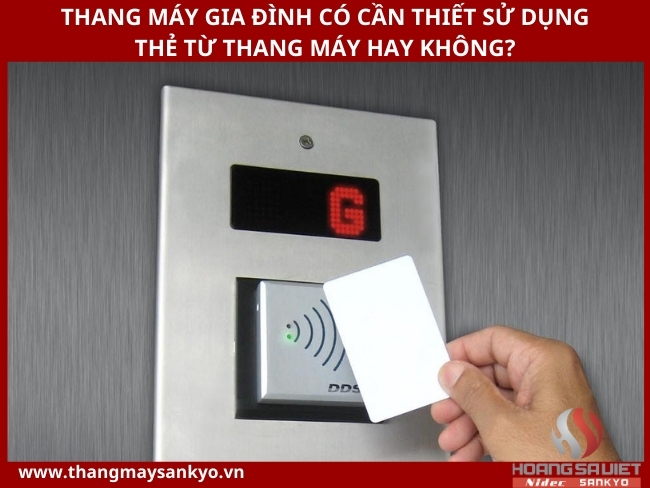
HOW TO COPY CARD FROM ELEVATOR TO CREATE A BACKUP COPY
To increase convenience when using, you can copy the card from the elevator for backup or flexible use in many different situations, to avoid forgetting or to share with more people. There are many methods of copying magnetic cards, including copying magnetic card information to the phone or converting to a new magnetic card using devices that copy information from the card.
|
Method |
Main characteristics |
Advantage |
Limit |
|
1. Copy to phone |
Use the NFC feature or mobile app to scan and store magnetic card information. |
- Simple, no peripherals needed. |
- Requires phone compatibility and security. |
|
2. Use a machine to copy magnetic card information |
300-CD machines and similar devices are used to copy information from the original card to the new card. |
- Fast, can be used for many magnetic cards. |
- Requires specialized equipment, may violate security regulations. |
|
3. Instructions on how to copy magnetic cards using the 300-CD machine |
Detailed instructions on how to use the 300-CD to copy card information from the elevator. |
- Simple and clear. |
- Requires understanding of 300-CD and security risks. |
Note: Copying magnetic cards may violate security and legal regulations, and should be carefully considered to avoid legal and ethical consequences.
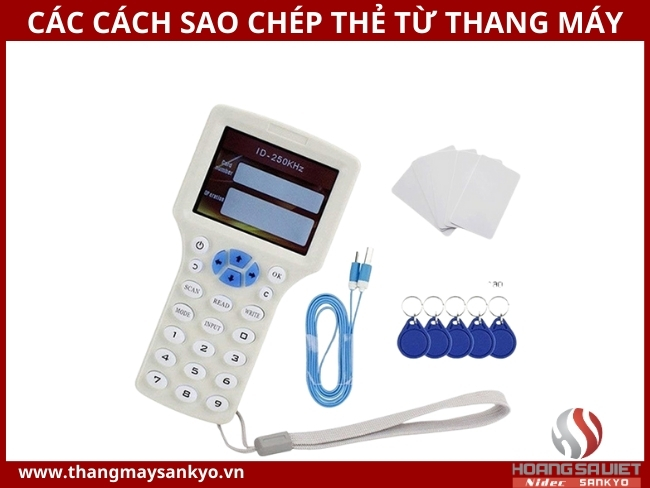
NOTES WHEN USING AN ELEVATOR CARD
Swipe the card correctly
Hold the elevator magnetic card to swipe no more than 10cm away from the elevator. Some types of cards can receive signals from a shorter distance, only 1-5cm. When you swipe your card, the elevator system will usually notify you with a light or bell to notify you that the card has been confirmed and you can use the elevator at your convenience.
Avoid damaging elevator cards
Do not break, distort or bend the magnetic card. These actions can damage the magnetic card, directly affecting the ability to use the elevator in the future. Store your card carefully to avoid damage and deformation.
Always carry your elevator card with you
Forgetting to bring your elevator card when going out is common, causing trouble when you want to use the elevator. Therefore, it is advisable to always keep the card with you to ensure you can use the elevator quickly.
Address for making reputable elevator cards
SANKYO Elevator Company is a unit with many years of experience, specializing in providing home elevator installation and maintenance services, and also providing elevator magnetic card installation at the most suitable prices. Chosen by many customers, we are committed to providing the best services when customers put their trust in us.
“Hoang Sa Viet Elevator - Always with you on every high floor!”
HOANG SA VIET ELEVATOR - LEADING PRESTIGIOUS ELEVATOR COMPANY IN VIETNAM
Consulting Specialist: 0942.222.075 Head Office: 184/20 Le Dinh Can, Tan Tao Ward, City. HCM Hanoi headquarters: No. 229, D. Van Tri, Van Noi, Dong Anh, Hanoi Website: thangmaysankyo.vn Email: hungpham@hoangsaviet.com




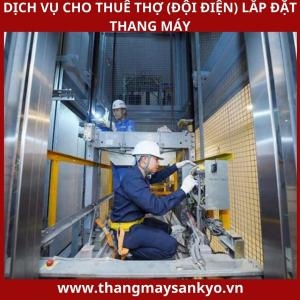


.png)
.png)

.png)






